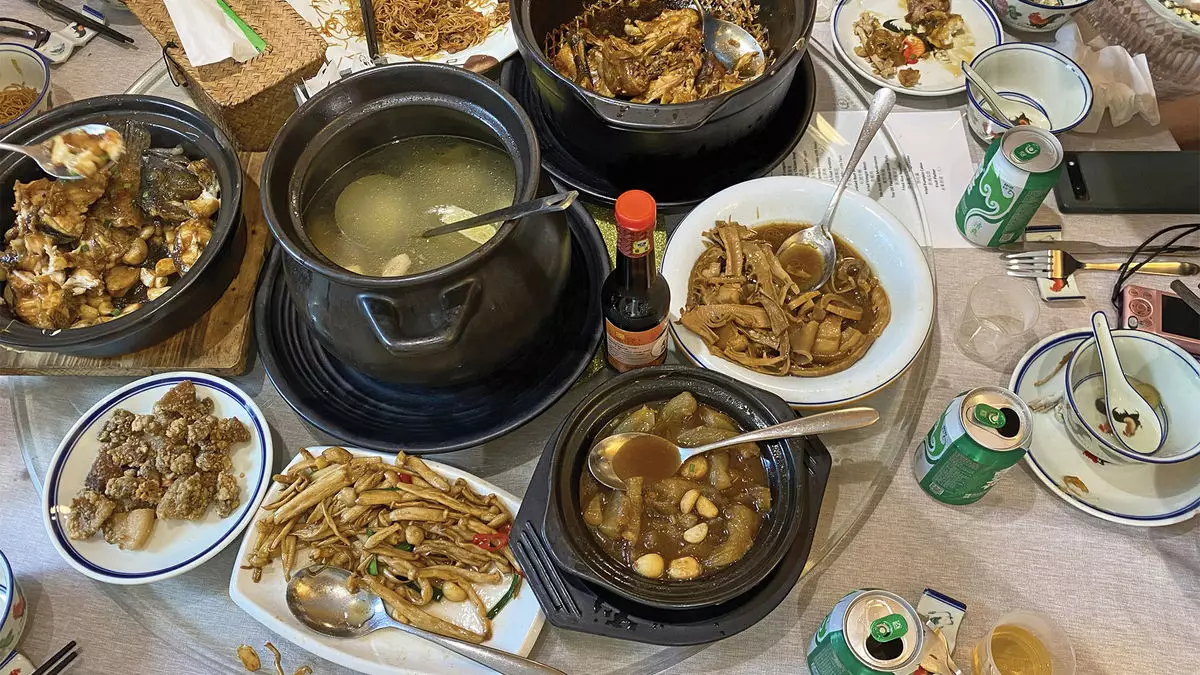For over two decades, my mornings have been marked by the ritual of sipping green tea—a comforting routine that I had never fully appreciated until a recent adventure in China. While traveling on the Viking Yi Dun, I found myself exploring the rich traditions and processes behind one of my favorite beverages in its very birthplace: Fujian province, a region renowned for its Tieguanyin tea. This experience not only expanded my understanding of tea but also deepened my connection to a practice that has been cherished for millennia.
On this inaugural coastal journey from Shanghai to Shenzhen, organized specifically for English-speaking travelers, I was not merely a passive observer. My fellow passengers and I fully engaged with the local culture, attending onboard traditional tea ceremonies that highlighted tea’s significance in Chinese society. As I watched a skilled artisan perform the intricate ritual, I realized that tea was more than just a drink; it was a ceremonial act filled with meaning and artistry.
Our adventure reached new heights when the ship docked in Xiamen, and we boarded a charter bus for an excursion into the scenic mountains of Fujian. The landscape transformed before my eyes, adorned with majestic hills and neatly arranged rows of tea trees, reminiscent of Italian vineyards. With our English-speaking guide leading the way, we absorbed fascinating insights about Tieguanyin tea, a delightful type of oolong that strikes a balance between green and black tea. As the guide spoke, I felt the excitement build; I was about to cultivate a deeper appreciation for this beverage I hold dear.
As the fragrance of vegetation surrounded me, I felt my senses awaken to a new understanding. Our tour culminated in a family-style lunch where local dishes incorporated the very tea we were about to harvest. Each bite served as a reminder of the deep connection between the land, its people, and their botanical treasure.
Equipped with bamboo hats and baskets provided by the tour staff, we prepared for our hands-on experience of harvesting Tieguanyin tea leaves. Walking downhill on a well-trodden path, I watched as leaves danced in the breeze, beckoning us to join in the age-old practice of tea picking. Our hosts guided us on the proper technique: select a trio of leaves—a larger leaf and its accompanying smaller sibling. I instinctively began to pluck the delicate leaves, reveling in the earthy scent that reminded me of my cherished tea routine at home.
However, nature had other plans. Raindrops soon began to fall, accompanied by a swarm of thirsty mosquitoes. We quickly retreated to a nearby gazebo, where we sought refuge as the rain poured down. This unscripted moment allowed us to absorb more tea wisdom from our guide while we enjoyed the lush scenery surrounding us. It was a testament to the unpredictability of life and the shared joy of experiencing something new, even in a brief moment of discomfort.
As the rain subsided, we returned to the tea facility for an insightful demonstration of the tea processing journey. From drying to frying and rolling the leaves, each step unraveled the meticulous enjoyments of bringing Tieguanyin from the garden to our cups. We took turns tossing the leaves in large baskets, experiencing first-hand how these simple yet essential processes transformed raw foliage into the delicacy we often take for granted.
After witnessing the labor behind our beloved beverage, we reconvened in a peaceful tearoom, where another traditional tea ceremony awaited us. Sharing a low table with fellow travelers, we savored a variety of teas, learning about each brew as we reveled in the atmosphere. The ceremony’s elegance left me captivated, prompting me to purchase a few selections to bring back home, eager to share this newfound knowledge with friends and family.
The experience carved out a deeper appreciation not only for Tieguanyin tea but also for the cultural tapestry it symbolizes within Chinese heritage. The accompanying rituals, flavors, and communal gathering created a lasting connection that transcended the taste itself. As my journey concluded, I found myself reflecting on the importance of mindfulness and ritual in my personal tea-drinking habit, now framed with stories and traditions that enrich every cup I brew.
In leaving Fujian province, I carried with me a more profound understanding of tea—a beverage that weaves through the fabric of life, connecting people across cultures and generations. In embracing the act of preparation and appreciation, I awakened a deeper respect for the role tea plays in not only my mornings but also a shared global heritage.


Leave a Reply